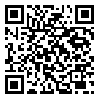Volume 5, Issue 16 (9-2015)
2015, 5(16): 305-313 |
Back to browse issues page
Download citation:
BibTeX | RIS | EndNote | Medlars | ProCite | Reference Manager | RefWorks
Send citation to:



BibTeX | RIS | EndNote | Medlars | ProCite | Reference Manager | RefWorks
Send citation to:
Mehryar E, Sadeghi M, Razavi S J, Forghani E. Qualitative Indices of Istamaran Date Variety Affected by Various Drying Methods. Journal of Crop Production and Processing 2015; 5 (16) :305-313
URL: http://jcpp.iut.ac.ir/article-1-2383-en.html
URL: http://jcpp.iut.ac.ir/article-1-2383-en.html
Isfahan University of Technology, Isfahan, Iran , sadeghimor@cc.iut.ac.ir
Abstract: (3832 Views)
Drying of fruits and vegetables is one of the oldest methods for preserving foods. Drying not only affects the moisture content of the product, but also changes other physical, chemical and biological properties of the product including enzymatic activity, microbial spoilage, viscosity, hardness, taste and aroma. In order to study the occurring changes in dried product, qualitative characteristics including shrinkage, color and water rehydration are commonly evaluated. The purpose of this research was to study the effect of drying methods on qualitative indices for dried Istamaran dates. The drying methods were hot air, microwave and vacuum drying. The photos of the final product were taken using a digital camera. Then, color parameters (L*, a* and b*) of the samples were measured using Photoshop software. The amount of shrinkage for dried product was determined by liquid displacement method. For evaluating rehydration ability, water absorption capacity (WAC), dry matter holding capacity (DHC), and rehydration ability (RA) were also estimated. Results showed that the effect of drying method on WAC, DHC, and RA was significant (p<0.01). Means comparison revealed that the structural damage into the final dried product occurred by microwave method was higher than that for hot air and vacuum drying methods. Drying method did not lead to any significant difference among shrinkage values. Drying temperature influenced shrinkage more than drying time. Analysis of variance showed that the effect of drying method on L*, a* and b* parameters was not significant. Since the temperature of drying in microwave method is very high, it is possible that caramelization occurs during this method. This phenomenon can be considered as the reason of color darkness caused by microwave method.
Send email to the article author
| Rights and permissions | |
 | This work is licensed under a Creative Commons Attribution-NonCommercial 4.0 International License. |







